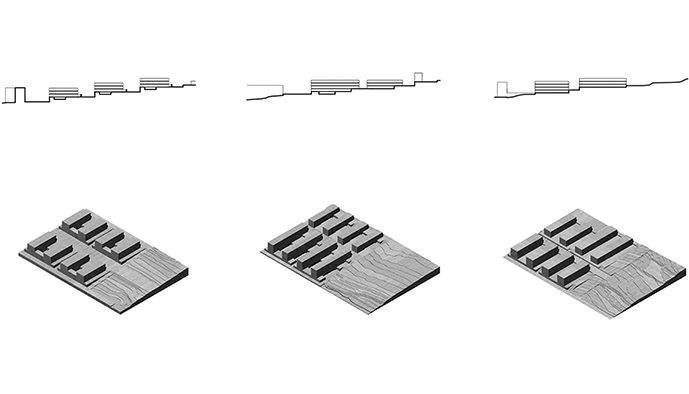Forme della Terra e Forme urbane
DOI:
https://doi.org/10.19229/2464-9309/2102017Parole chiave:
progetto urbano, geografia fisica, città e territorioAbstract
Il rapporto tra le forme della Terra e le forme della città ha origini antiche; nel corso dei secoli, molti insediamenti sono nati in seguito al riconoscimento delle vocazioni spaziali insite nelle forme geografiche riuscendo a esaltare i caratteri naturali di un determinato territorio. In Italia, nel secolo scorso, la teoria del progetto urbano ha affrontato questi temi cercando di definire la sintassi della costruzione urbana in rapporto alle forme della geografia fisica. In questo senso, i progetti per i quartieri della Magliana a Roma di Saverio Muratori, e quello per Monteruscello di Agostino Renna possono essere considerati esempi paradigmatici poiché rappresentano il tentativo di definire forme insediative corrispondenti ai caratteri geomorfologici del territorio. Il paper proposto intende analizzare questi progetti, in particolare attraverso il metodo del ridisegno critico, individuando distinte scale di rappresentazione, ognuna delle quali offre la possibilità di ‘indagare’ alcuni processi di costruzione della forma.
Downloads
##plugins.generic.articleMetricsGraph.articlePageHeading##
Riferimenti bibliografici
Barbieri, G. (1996), “Configurazioni della città diffusa”, in Clementi, A., Dematteis, G. and Palermo, P.C. (eds), Le forme del territorio italiano – 1 – Temi e immagini del mutamento, Biblioteca di cultura moderna, Laterza, Roma-Bari, pp. 109-111.
Boeri, S. and Lanzani, A. (1992), “Gli orizzonti della città diffusa”, in Casabella, n. 588, pp. 44-59.
Camus, A. (1950/1954), Noces L’ete, it. trad. (2003/2013), in Pastura, C. (ed.), L’estate e altri saggi solari, Bompiani, Milano.
Gisotti, G. (2016), La fondazione delle città – Le scelte insediative da Uruk a New York, Carrocci Editore, Roma, pp. 366-370.
Lucci, R. (2016), “Agostino Renna e la Scuola di Napoli”, in Capozzi, R. et al. (eds), Agostino Renna – La forma della città, Clean Edizioni, Napoli.
Moccia, C. (2015), “Forme della Terra e principi insediativi”, in Moccia, C. (ed.), in Realismo e astrazione, Aión, Firenze, pp. 71-76.
Settis, S. (2017), Architettura e democrazia – Paesaggio, città, diritti civili, Einaudi, Torino.

##submission.downloads##
Pubblicato
Come citare
Fascicolo
Sezione
Licenza
AGATHÓN è pubblicata sotto la licenza Creative Commons Attribution License 4.0 (CC-BY).
License scheme | Legal code
Questa licenza consente a chiunque di:
Condividere: riprodurre, distribuire, comunicare al pubblico, esporre in pubblico, rappresentare, eseguire e recitare questo materiale con qualsiasi mezzo e formato.
Modificare: remixare, trasformare il materiale e basarti su di esso per le tue opere per qualsiasi fine, anche commerciale.
Alle seguenti condizioni
Attribuzione: si deve riconoscere una menzione di paternità adeguata, fornire un link alla licenza e indicare se sono state effettuate delle modifiche; si può fare ciò in qualsiasi maniera ragionevole possibile, ma non con modalità tali da suggerire che il licenziante avalli l'utilizzatore o l'utilizzo del suo materiale.
Divieto di restrizioni aggiuntive: non si possono applicare termini legali o misure tecnologiche che impongano ad altri soggetti dei vincoli giuridici su quanto la licenza consente di fare.
Note
Non si è tenuti a rispettare i termini della licenza per quelle componenti del materiale che siano in pubblico dominio o nei casi in cui il nuovo utilizzo sia consentito da una eccezione o limitazione prevista dalla legge.
Non sono fornite garanzie. La licenza può non conferire tutte le autorizzazioni necessarie per l'utilizzo che ci si prefigge. Ad esempio, diritti di terzi come i diritti all'immagine, alla riservatezza e i diritti morali potrebbero restringere gli usi del materiale.


















































































